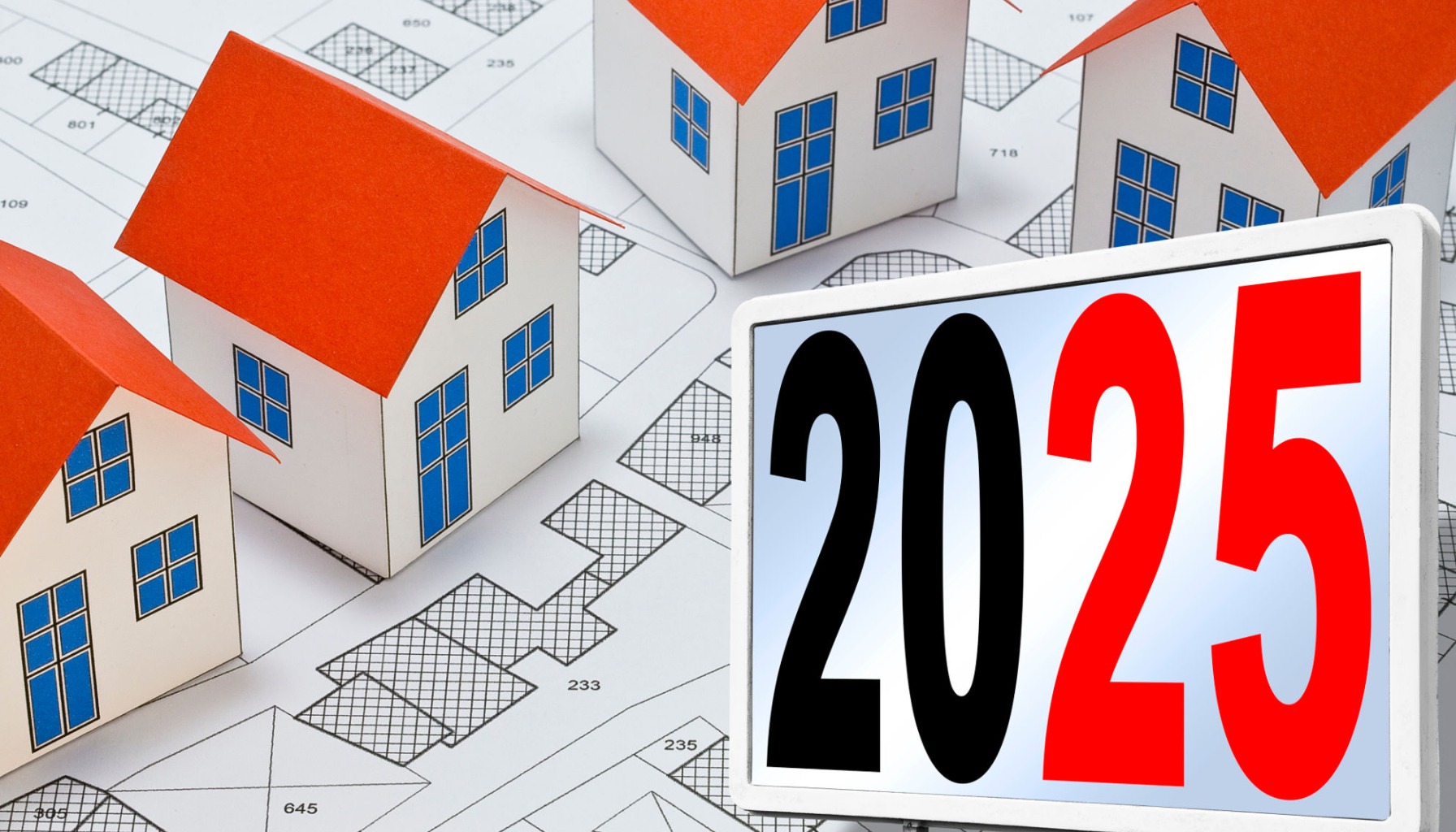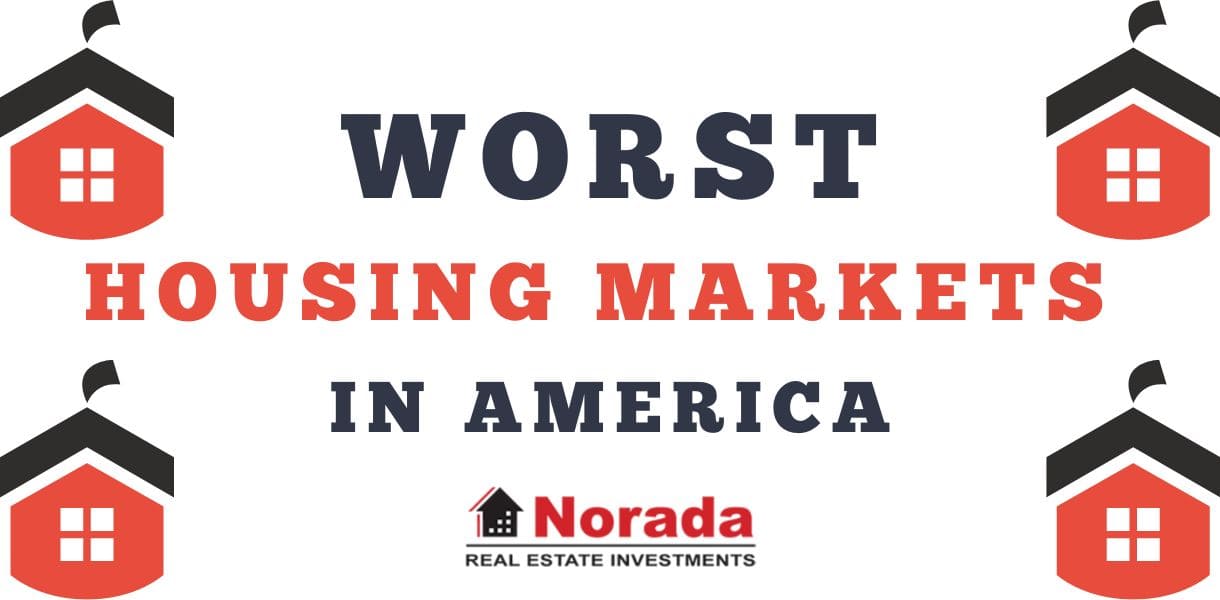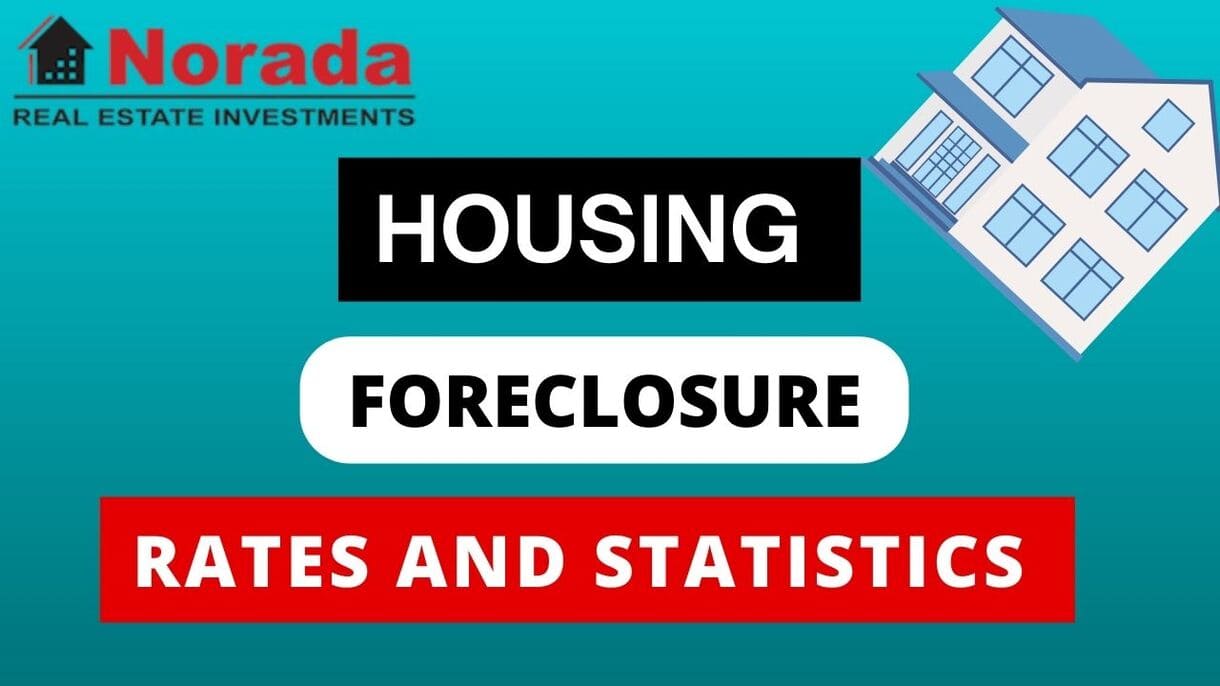As we move through August 2025, the housing market is showing a mixed bag of signals, and as Norada Real Estate, we're here to help you make sense of it all. The buzz around housing market predictions for 2025 by Norada Real Estate suggests a market still finding its footing, with some key developments shaping the outlook for the remainder of the year.
Based on the data we’ve seen from January through June 2025, it’s clear that while challenges persist, there are also pockets of opportunity and reasons for cautious optimism. The overall trend points towards a market that, while not exactly explosive, is showing signs of stabilization and even growth in certain areas, especially if mortgage rates continue their anticipated slow decline.
Let's dive into the specifics of what the first half of 2025 has shown us and project what that means for the next several months.
Housing Market Predictions 2025 by Norada Real Estate: What to Expect
A Look Back at the First Half of 2025: Peaks, Valleys, and Developing Trends
The data by the National Association of REALTORS® shows that the first six months of 2025 have provided a fascinating glimpse into the forces at play in our housing market. We've seen fluctuations that reflect broader economic conditions, mortgage rate movements, and evolving buyer and seller sentiment.
- January 2025: Things started with a bit of a dip. Existing-home sales slipped by 4.9% in January. This was partly due to mortgage rates averaging 6.76% in the months leading up to the closings, a noticeable jump from the low 6% range seen earlier. However, it's important to note that sales were still up 2% compared to the previous year. This suggests that many buyers were indeed adapting to higher borrowing costs. The median home price climbed by 4.8% year-over-year to $396,900. This was interesting because, at the same time, median listing prices were actually coming down. We saw stronger sales in higher price points, while lower-priced listings saw more robust gains, creating a bit of a divergence. The takeaway here was that while the market was cooling slightly, it wasn't collapsing, and buyer adaptability was a key factor.
- February 2025: We saw a rebound in February, with existing-home sales climbing 4.2% month-over-month to a pace of 4.26 million. However, this month’s sales trailed the year-ago pace by 1.2%. What was driving this? Mortgage rates averaged 6.96% in January, reaching their highest point since May of the previous year, and held steady at 6.84% in February. This clearly demonstrated that mortgage rates were still a dominant factor for shoppers. Despite the higher borrowing costs, the increase in sales showed that buyers and sellers were still managing to connect and find common ground for transactions. The median home price continued its upward trend, growing 3.8% year-over-year, a slight cool-down from the previous month's growth rate. The forecast was cautiously optimistic, with the potential for a reverse in the upward mortgage rate trend, which could boost the busy spring selling season.
- March 2025: This month brought a more concerning trend. Existing-home sales fell sharply by 5.9% from February, hitting their slowest March pace since 2009. The annual rate was 4.02 million, down 2.4% from the previous year. This was a significant downward shift, especially heading into the crucial spring season. Mortgage rates, while down slightly to 6.65%, had recently climbed. Adding to the uncertainty was a Presidential tariff announcement in early April, which created economic jitters. NAR Chief Economist Lawrence Yun pointed to affordability challenges due to high mortgage rates as the main culprit, noting that housing mobility was at historical lows. Positively, inventory saw a significant jump, up 19.8% from the previous year. This meant more options for buyers, potentially increasing their negotiating power. Despite overall sluggishness, sellers remained confident, with most expecting to get their asking price. The core issue here was shifting from a “not enough sellers” market to worrying about “not enough buyers” due to affordability.
- April 2025: The slowdown continued. Existing-home sales dropped another 0.5% from March, reaching 4 million, down 2% from the previous year, and marking the slowest April pace since 2009. The total supply of homes for sale jumped to a five-year high of 1.45 million, up 21% from the previous year. This meant a 4.4 months’ supply, the highest since May 2020. The median sales price nationally was $414,000, up 1.8% year-over-year but with regional variations – prices were falling slightly in the South and West but rising in the Northeast and Midwest. Mortgage rates hovered around 6.73%. The tariff announcement’s impact was still being felt, with homebuyer confidence shaken, leading to a spike in contract cancellations. Regionally, the West and South were showing weaker demand compared to the North and Midwest. The consensus was that mortgage rates would likely remain a hurdle for sales in the near term.
- May 2025: Sales remained sluggish, inching up only 0.8% month-over-month to 4.03 million, but still down 0.7% year-over-year. This capped off a disappointing spring season. The median sales price hit a new record for May at $422,800, up 1.3% year-over-year, showing that prices were still climbing despite lower sales activity. Mortgage rates averaged 6.82% for the month. Importantly, inventory continued to grow, sitting at 1.54 million units, up 20.3% from the previous year. This gave buyers more choices and time to consider their options, shifting the market from heavily seller-favored towards more balance. Affordability remained the main challenge, amplified by high prices and mortgage rates. Heightened economic uncertainty from earlier tariff actions continued to weigh on consumer confidence. While there was some optimism about potential interest rate cuts later in the year, experts predicted little immediate movement on mortgage rates.
- June 2025: The year concluded its first half with a 2.7% decrease in existing-home sales month-over-month, landing at a seasonally adjusted annual rate of 3.93 million. Year-over-year, sales were actually unchanged. Inventory saw a slight dip to 1.53 million units, representing a 4.7-month supply. The median existing-home price reached a record high for June at $435,300, up 2% from the previous year—celebrating the 24th consecutive month of year-over-year price increases. NAR Chief Economist Lawrence Yun highlighted that while homeowners' wealth was growing, persistent undersupply and high mortgage rates were keeping sales stuck at cyclical lows. He noted that a drop in mortgage rates to 6% could lead to significantly more first-time homebuyers and increased sales activity. The data also showed individual investors retreating from the market, with cash sales and distressed sales remaining relatively steady.
Housing Market Predictions for the Rest of 2025: What the Data Tells Us
Looking at the trends from January to June 2025, here’s my take on what we can anticipate for the rest of the year and how we see the housing market predictions 2025 by Norada Real Estate playing out:
1. Mortgage Rates: A Slow and Steady Decline
The data consistently points to mortgage rates as the primary driver of market activity. Throughout the first half of 2025, rates hovered predominantly in the upper 6% to nearly 7% range. However, the projections from NAR Chief Economist Lawrence Yun suggest a more favorable environment in the latter half of the year, with rates expected to average 6.4% in the second half.
- My Opinion: From my perspective at Norada Real Estate, this projected dip, even if gradual, is crucial. It's not a dramatic drop, but it's enough to start luring more buyers back who have been priced out or hesitant due to high borrowing costs. A move from, say, 6.7% down to 6.4% can make a significant difference in monthly payments, potentially unlocking demand that has been suppressed. We’ll be watching for any shifts in Federal Reserve policy for cues on this trend.
2. Home Sales: A Flicker of Recovery
Existing-home sales experienced a volatile start to 2025, with ups and downs. The overall pace has been somewhat sluggish, with April and May showing the slowest paces for those months in years. However, the projected moderation in mortgage rates is expected to bring a more positive trend. NAR forecasts existing-home sales to rise by 6% in 2025. While the Realtor.com forecast suggests sales might land at 4 million, just behind 2024’s long-term low, this still points to a market that isn't actively declining.
- My Opinion: I believe that the underlying demand for homeownership remains strong. Many people still aspire to own a home. As affordability improves slightly with lower rates and prices moderate their growth, we should see more transactions. The increase in inventory throughout the first half also means buyers have more choices, which can facilitate sales. We might see a stronger finish to the year than the first half implied, especially in the fall selling season if those rate drops materialize.
3. Home Prices: Continued Growth, But at a Slower Pace
Despite any monthly fluctuations, the median home price continued to climb year-over-year throughout the first half of 2025, even reaching record highs for specific months. NAR predicts a modest 3% rise in median home prices for 2025. Realtor.com forecasts a similar +2.5% growth. This indicates that while the rapid price appreciation seen in previous years has cooled considerably, prices are unlikely to fall significantly.
- My Opinion: This sustained price growth is largely due to the ongoing housing supply shortage. While inventory has increased, it's still below pre-pandemic levels. When demand picks up, even moderately, the limited supply will continue to put upward pressure on prices. However, the higher mortgage rates are acting as a natural brake on extreme price escalation. We're moving towards a more sustainable appreciation rate, which is healthier for the long-term market. Buyers shouldn't expect massive price drops, but the days of bidding wars on every single property might be less common.
4. Inventory: A Buyer's Best Friend (or at Least a Friendly Acquaintance)
The supply of homes for sale has been steadily increasing. By June 2025, inventory stood at 1.53 million units, up significantly from the previous year. This has led to a longer supply of months, moving towards a more balanced market.
- Expert Opinion: This is perhaps one of the most significant shifts we're observing. For years, the challenge was finding a home. Now, while affordability is still a concern, buyers have more options and more time to make decisions. This is a welcome change for many. The increase in inventory is a direct result of slower sales and, perhaps, some homeowners who held off on selling being more confident as the year progressed. As the market rebalances, buyers will likely have more negotiating power, especially on properties that aren't priced perfectly or require some work.
5. Regional Variations: The Divergence Continues
We observed clear differences in market performance across the country. The Northeast and Midwest generally saw stronger price appreciation and modest sales growth, while the South and West experienced slight price declines and weaker sales for parts of the first half.
- My Opinion: This is a trend I expect to continue. Local economic conditions, job growth, cost of living, and even local housing policies all play a significant role. For instance, areas with strong job markets and more affordable entry points might see more resilience. We’ll continue to advise clients to look closely at specific regional data rather than relying solely on national averages when making their real estate decisions.
Housing Market
Key Market Trends
Insight Beyond the Numbers
As someone who lives and breathes real estate every day, I can tell you that the numbers only tell part of the story. The sentiment of buyers and sellers, the stability of the economy, and even geopolitical events can all influence the market.
- The “American Dream” Factor: Despite financial considerations, homeownership remains a significant goal for many Americans. This underlying demand is a powerful force that will continue to support the market, even through challenging economic periods.
- The Impact of Home Construction: Lawrence Yun mentioned that home construction continues to lag population growth. This persistent undersupply is a foundational issue that will keep a floor under prices. Any significant increase in new construction would dramatically change the dynamics, but that's a longer-term solution.
- Investor Behavior: The decrease in individual investor activity noted in the June report is also telling. Investors often pull back when markets are uncertain or when opportunities elsewhere seem more attractive. This can be a signal that the market is becoming more grounded in owner-occupier demand.
Looking Ahead: The Key Levers for the Rest of 2025
Based on everything we've observed and the projections from leading sources, the critical factors that will shape the remainder of 2025 are:
- Mortgage Rate Stability/De cline: Will rates continue their downward trend as predicted? Any deviation from this could significantly alter buyer behavior.
- Inflation and Economic Stability: While tariff-related uncertainty seemed to cause a mid-spring dip in confidence, continued economic stability is vital for sustained buyer confidence and market health.
- Inventory Levels: Will the increase in supply continue, offering buyers more breathing room, or will sales activity pick up enough to absorb it?
Summary: A Market of Adjustment and Opportunity
The housing market predictions 2025 by Norada Real Estate paint a picture of a market that is adjusting, not collapsing. While the first half presented challenges, particularly around affordability and economic uncertainty, the second half could see a more positive trajectory. Mortgage rates are expected to move lower, inventory is higher, and while prices are still appreciating, it’s at a more sustainable pace.
For those looking to buy, this period of increased inventory and potentially more balanced negotiations presents an opportune moment to enter the market, provided they maintain financial discipline. For sellers, it’s a time for realistic pricing, strong presentation, and working with experienced professionals to navigate the evolving conditions.
At Norada Real Estate, we believe that understanding these trends is the first step toward making sound real estate decisions. We’re excited to see how the market unfolds and ready to help you capitalize on the opportunities that arise in the latter half of 2025.
Invest in Real Estate in the Top U.S. Markets
Discover high-quality, ready-to-rent properties designed to deliver consistent returns.
Contact Norada today to expand your real estate portfolio with confidence.
Contact our investment counselors (No Obligation):
(800) 611-3060
Also Read:
- Housing Market Predictions 2025 by Warren Buffett's Berkshire Hathaway
- Will the Housing Market Crash in 2025: What Experts Predict?
- Housing Market Predictions 2026: Will it Crash or Boom?
- Housing Market Predictions for the Next 4 Years: 2025 to 2029
- 12 Housing Markets Set for Double-Digit Price Decline by Early 2026
- Real Estate Forecast: Will Home Prices Bottom Out in 2025?
- Real Estate Forecast Next 5 Years: Top 5 Predictions for Future
- 5 Hottest Real Estate Markets for Buyers & Investors in 2025
- Will Real Estate Rebound in 2025: Top Predictions by Experts
- Will the Housing Market Crash Due to Looming Recession in 2025?
- 4 States Facing the Major Housing Market Crash or Correction
- New Tariffs Could Trigger Housing Market Slowdown in 2025
- Real Estate Forecast Next 10 Years: Will Prices Skyrocket?





